Reading Time: 6 minutes
Swordfish are among the fiercest predators in the ocean, praised by anglers for their brutish demeanor and meaty taste. These fish are on most anglers’ bucket list, and for a good reason. Catching a Swordfish is a feat of a lifetime: it takes patience, determination, an arsenal of high-end fishing gear, and the ability to read charts and electronics with precision. So today, we’re going to have a look at tried-and-tested daytime Swordfish tactics. Make sure to take notes: next time you go chasing this behemoth, you’ll be well-equipped for the action!
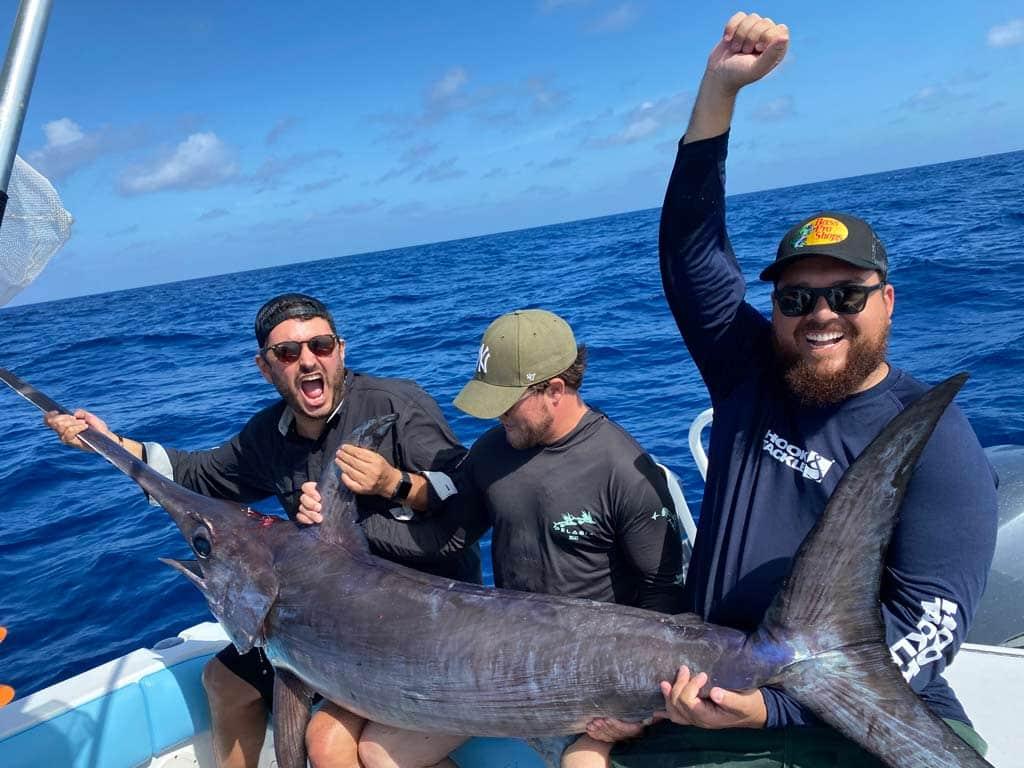
The Old School Night Time Swordfishing: A Thing of the Past
Pulling up a Swordfish in broad daylight used to be considered impossible. Those who supported this idea were often seen as either reckless or just plain crazy. And it wasn’t without a reason.
Swordfish live far below, often at depths of several thousand feet. Without proper electronics, it’s difficult to find them, let alone make sure you present your bait properly. As fishing technology advanced, more and more possibilities started springing up. Daytime swordfishing is one of them.
Daytime Swordfishing is more than just a fad. Anglers have managed to capture these predators around the world, from California to the Gulf of Mexico, and all the way to the Mediterranean, Australia, and Venezuela.
A lot of anglers still find it hard to believe their eyes when they see a Swordfish leaping out of the water against the blue skies. At first, they tend to confuse it with Sailfish or Marlin. But then, when they switch to rods and the fish pulls, they become fully aware of what’s at the end of the line.
Swordfish are much stronger than other members of the Billfish family, such as Marlin or Sailfish. Even Blue Marlin can’t compare to the strength of a Swordfish. Swordfish have an additional “battery” of strength in the base of their tail. Their dorsal fin is fixed and their bill is much larger than that of a Marlin or Sailfish.
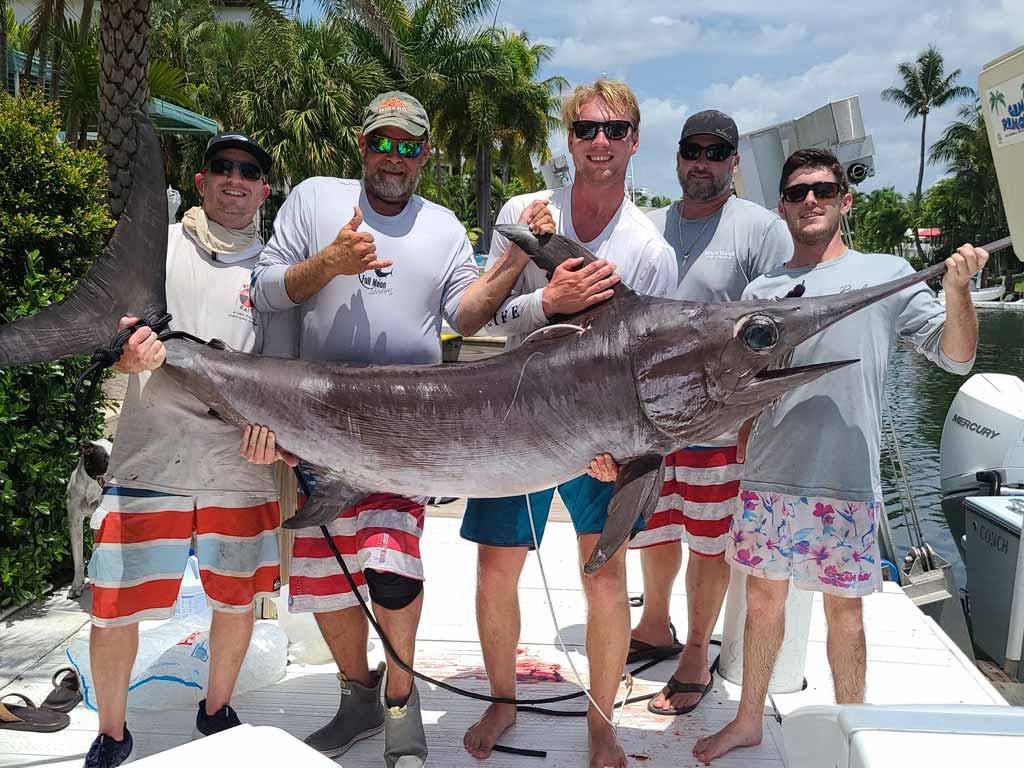
Where do Swordfish live?
Swordfish live in the same places as other game fish, especially Billfish. However, while Marlin and Sailfish dwell near the surface, Swordfish tend to stay further below.
One rule of thumb you can follow to find the right depth for Swordfish is to look for the ‘deep scattering layer’.
The deep scattering layer (DSL) is an ocean layer where a lot of marine life activity is going on. Here – usually at depths of 1,000-1,500 ft – you will find a mass of plankton, squid, and baitfish. During the night, these baitfish come closer to the surface to feed. Come day, they start to move deeper down.
This is why you can catch Swordfish at depths of just 300 ft during the night. The critters from the deep scattering layer are much closer to the water surface. During the day, as the baitfish hides deeper down, so do the Swordfish.
However, a lot of anglers make the mistake of insisting to fish even deeper than the DSL. They drop their bait to as much as 5,000 ft below the surface, which is often unnecessary. Swordfish tend to stay close to their food. To save yourself some time, fuel, and energy, feel free to work the deep scattering layer, even if you’re fishing during the day. So prepare to fish depths of about 1,500 ft.
How to Catch Swordfish during the Day
There are multiple daytime Swordfish tactics that produce good results. We’ll look at three of them.
Bump Trolling
Bump trolling is one of the most popular daytime swordfishing tactics. Here’s what it looks like.
You start by rigging your bait and dropping it to a variety of depths using a buoy rod. The buoy rod is essentially a line suspended at a specific depth by a bobber-like fishing buoy.
For example, if you’re fishing depths of 4,000 ft, set one of the lines at 800 ft, another one at 1,300 ft, and then a line off a rod tip somewhere between 1,600 and 1,900 ft.
When your presentation is set, bump your boat forward. This will make your bait move a bit towards the surface. As you slow down, your bait will drop back to the initial depth. This is a good tactic as it lets you cover a lot of ground while trolling, but also to test out greater depths.
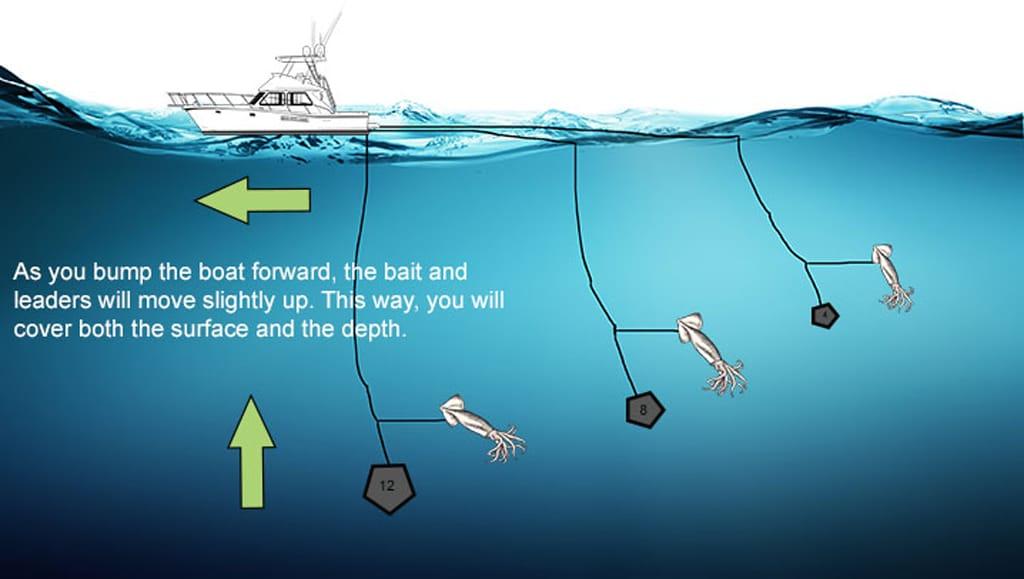
This approach is particularly useful when there is little to no current. Back in the day, a strong current used to be considered a prerequisite in Swordfishing. These days, that’s not the case.
Breakaway Sinkers and Driving against the Current
A second popular tactic for daytime Swordfishing is using breakaway sinkers when fishing against a strong current.
When do you use this?
If you’re facing a strong current on the surface – we’re talking 3 knots or more (what you’ll typically find in the Gulf Stream) – which then subdues and turns into a light/non-existent current deep down.
How to Use Breakaway Sinkers for Swordfish
Start with a 10- to 12-pound lead or breakaway weight, to keep your bait close to the bottom, some 100 ft from the ocean floor. Attach it to your line and let it sink. Make sure to use strobe lights – you still need to help Swordfish find your bait.
Add another line, attaching a lighter, 6- to 8-pounds weight. Add strobe lights to that as well. This bait will be closer to the surface and you will be covering different depths.
Some anglers add buoy lines, using lighter weight and short leaders.
Once you’ve presented your bait, start driving the boat against the current at a slower pace than the current. This means that if the current is about 3-4 knots, you should drive at 1.5-2 knots.
Then, troll backwards with the current, at the same speed.
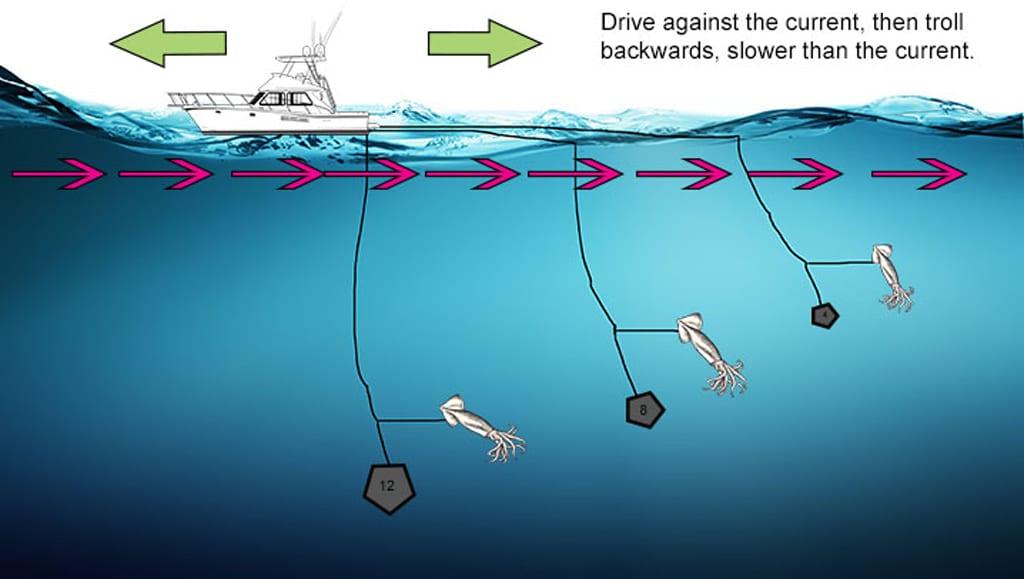
Swordfish with What You’ve Got: A Two-Weight Rig
One of the biggest challenges for Swordfishing enthusiasts is to keep the bait deep enough for Swordfish to see – and take it. Over the years, anglers have used lead, cement blocks, and even bricks to keep their bait deep enough.
Another tactic anglers have been testing in the Gulf of Mexico and Australia is called a “two weight rig”. It’s best used in waters with little current, where fish congregate around a familiar, specific spot.
What you do then is use a light lead, as light as a couple of pounds, and place it some 50 feet from the bait. Again, attach a strobe light between the bait and the lead. Now, this is where creativity comes into play.
As your bait is rigged and stitched to a hook, you can enhance your presentation further. How?
Use a coat hanger (yes, your everyday regular coat hanger) and attach it to a rebar (aka a steel bar) using duct tape. The rebar should weigh between 10 and 12 pounds.
Then, attach this contraption to the hook and voila! The rebar will quickly make its way downward, taking your rig and bait down to where Swordfish can spot it and gulp it up. Once the steel bar drops your bait deep enough, it will simply fall off, as the coat hanger isn’t tightly fixed to the hook (see below).
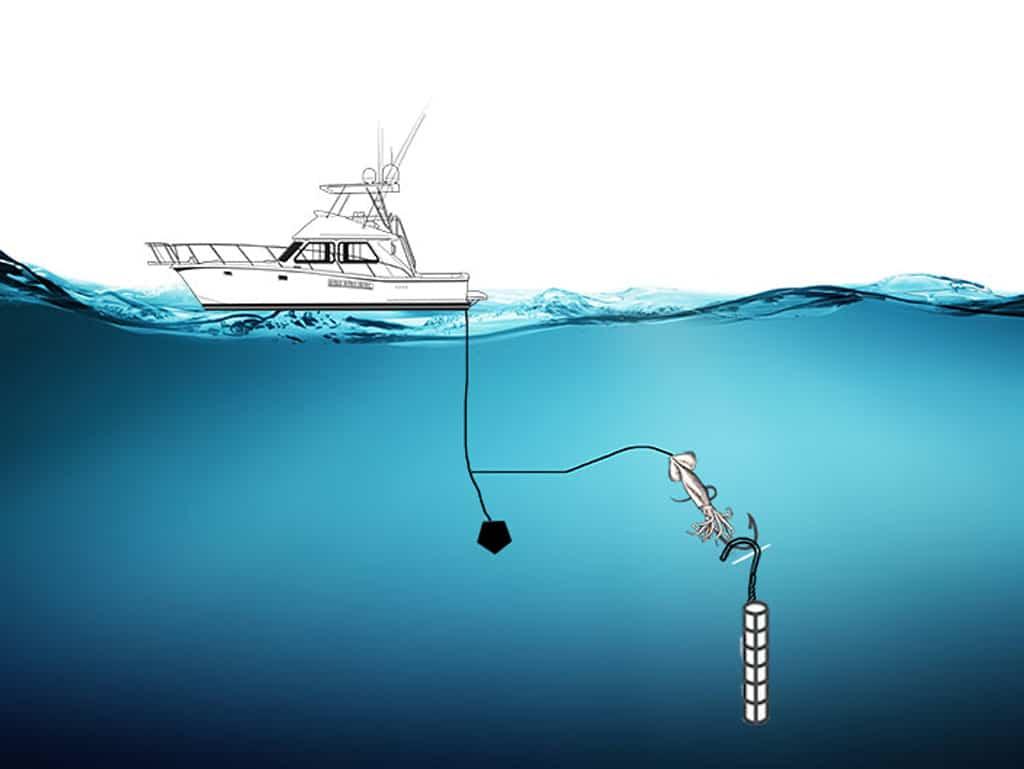
So, let’s turn it over to you. What tactics do you use when fishing for Swordfish? Have you caught Swordfish in the daylight before? What rig did you use? Let us know in the comments below! Need a little practice? Find a charter near you and get out there!

